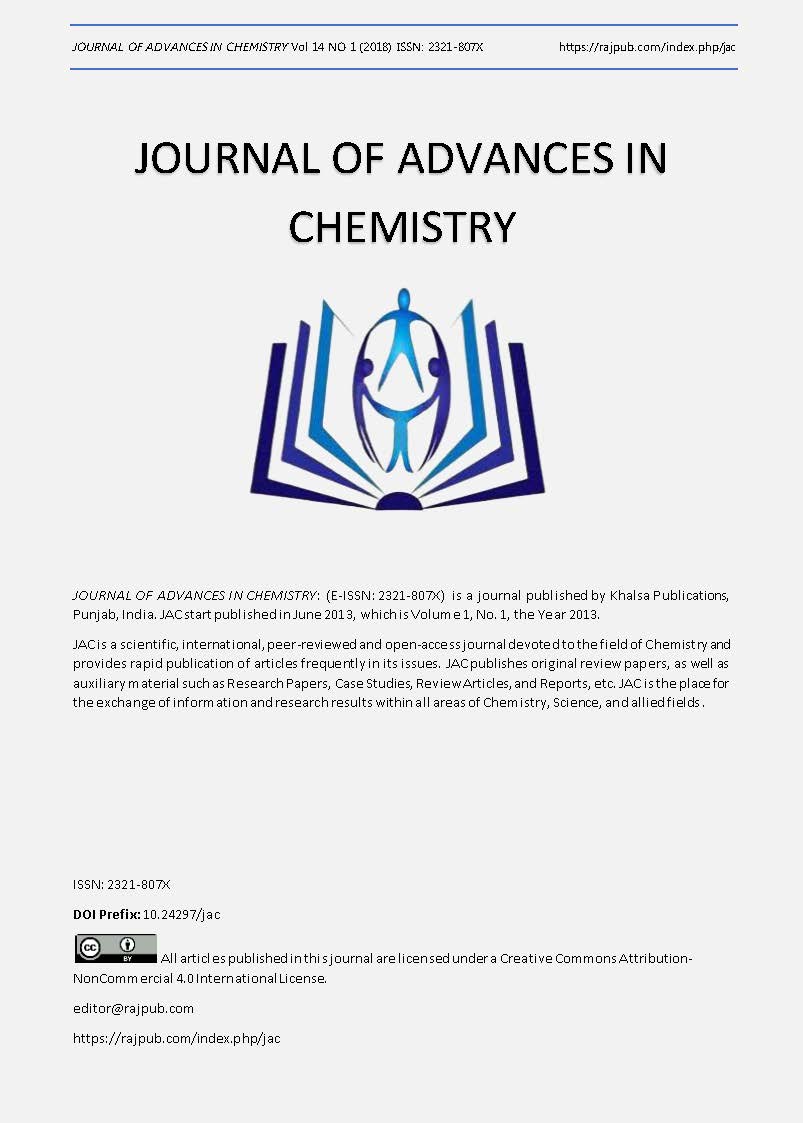INVESTIGATION THE OLIGOMERIZATION PROCESS OF HEXENE-1
DOI:
https://doi.org/10.24297/jac.v14i1.6455Keywords:
new catalytic complex, oligomerization, hexene-1, oligomers, synthetic oilsAbstract
In article for oligomerization and alkylation processes, to obtain a useful and highly stable active catalyst, New Catalytic Complex (NCC) synthesized which is based on aluminum metal using C2H4Cl2 and this complex has shown high stability in alkylation, oligomerization processes compared to other aluminum-containing catalysts. It is difficult to regulate the molecular mass distribution of received products during oligomerization, either Intensificate the oligomerization process of olefins that is why this process take place in presence of obtaining of bimetal catalytic complex with a highly stable activity from the modification of the New Catalytic Complex(NCC) with transition metal chloride. Comparatively studied oligomerization of Hexen-1 in present of new bimetallic catalytic complex which was modified by NCC and chromium salt (NCC/CrCl3), effect of temperature, reaction time, concentration of the catalyst and the proportion of catalyst components (Al:Cr) in the process was investigated.It was determined that at the initial time (10 min) conversion hexene-1 and the yield of purposeful oil fraction were low. Increasing time, conversion rate of Hexen-1 increases and the optimal time for the process is considered as 60 minutes. In low concentrations of catalyst (0,1-0,3) oligomerization of hexene-1 is low but in high concentrations(>1%) reaction goes with high rate, at optimal concentration 0,5% mass both the yield of oil fraction and its chemical-physical properties were high.In oligomerization process investigated ratio effect of catalyst components Al: Cr that was used Al: Cr=(4-32):1 mol.It has been revealed that oligomerization of Hexen-1, at low mol ratio of components (4:1), received yield of oligomer fraction decreases while mol ratio increases (16:1, 32:1).Studies determined that bimetallic complex at 8:1 mole has shown the maximal activity in oligomerization process of Hexen-1.The effect of the temperature on the oligomerization process was studied in the range of 30-60ºC, increasing the temperature up to 50 °C has a positive effect on the course of the process and despite providing complete oligomerization of hexene-1 its also providing increasing the amount of oil fractions with high viscosity. According to the researches, the optimal conditions for the oligomerization process of hexene-1 with the participation of the bimetallic catalytic complex: reaction time – 60 min., concentration of catalyst – 0,5 % by wt., mol ration of components Al:Cr = 8:1, temperature – 50 °C. In known optimal condition its possible to obtain oligomers with physical indications, characterized by narrow molecular mass distribution, by new catalytic complex that was modified by chromium salt.Such products have special importance, as low-freezing, high viscosity index qualitative engine oils.Synthesis of bimetallic catalytic complexes, with their presence in oligomerization of olefins and fractions, opens wide range perspectives in synthesis of different high-molecular compounds in industry
Downloads
References
2. IbragimovKh.D., Alizadeh A.A., Ibragimova Z.M. perspective for the synthesis of polyalphaolefin oils // Azerbaijan National Academy of Science Institute of Petrochemical Processes named after Academician Yu.H.Mamedaliyev. Petrochemicals and oil refining processes. 16.3(63), 2015, p.265-280.
3. Kotov S.V, Moiseev I.K, Shabanova Ð.V. Oligomers of olefins: methods of preparation and use as components of fuels and oils. Petrochemistry, 2003, vol. 43, No. 5, p. 233-334
4. Matkovsky P.E, Startseva G.P, ChurkinaV.Ya. and etc. Scientific foundations and technological design for the process of obtaining synthetic oligodecene oils for road transport. // Chemistry in interest of stable development 2005, No. 13, p.787-791
5. Liu J, Shen H B, Wang M. Synthesis of high viscosity index PAO[J]. Synthetic Lubricants, 2006, 33(1), p.13-15
6. Guseinova G.A. Technological aspects of obtaining synthetic olefin white oils. // Oil refining and petrochemistry, 2006, â„–7, c.21-25
7. Ibragimov H.J., Gasimova K.M., Ibragimova Z.M., Kolchikova I.V., Khalaf M.M., Alieva A.E. Synthesis and study of bimetallic catalytic systems formed in situ by aluminum, 1, 2-dichloroethane and Fe (III), Ni (II), Mn (II) chlorides // Journal of Advances in Chemistry. 2013. 3(1). p.120-132
8. Ibragimov H.C., Ismailov E.H., Gasimova K.M., Yusifov Y.H., Ibragimova Z.M., Kolchikova I.V. Bimetallic aluminum complexes modified with chloride Ions of Mn (II), Fe (III), and Ni (II) for pyrocondensateoligomerization // International Research Journal of Pure & Applied Chemistry. 2013. 3(4). P.428-440
9. Ibragimov H.J., Gasimova K.M., Ibragimova Z.M., Gasimova G.F.. Synthesis of Petroleum Polymer Resin by Catalytic Polymerization of Pyrocondensate and Its Fractions // American Chemical Science Journal. 2014. 4(1). p.82-96
10. Pat. I. 2002 0001 Az. R.Rustamov MI, Babaev AI, Farhadova GT, Kyazimov S.M. Method for the preparation of a catalyst for the conversion of hydrocarbons. 2002.
11. Kh. D. Ibragimov, KM Kasumova, Z. Ibragimov, Sh.A.Alizade, I.V. Kolchikova, S. M. Aleskerov Application of nano-sized carbon aluminum-containing bimetallic catalytic complexes in oligomerization processes. // Azerbaijan Chemical Journal, 2016, â„–4, p.64-68.
12. Eric J. Goethals, Filip Du Prez. Carbocationic polymerizations // Progress in Polymer Science. 2007. v.32. No 2. p.220–246
Downloads
Published
How to Cite
Issue
Section
License
 All articles published in Journal of Advances in Linguistics are licensed under a Creative Commons Attribution 4.0 International License.
All articles published in Journal of Advances in Linguistics are licensed under a Creative Commons Attribution 4.0 International License.




